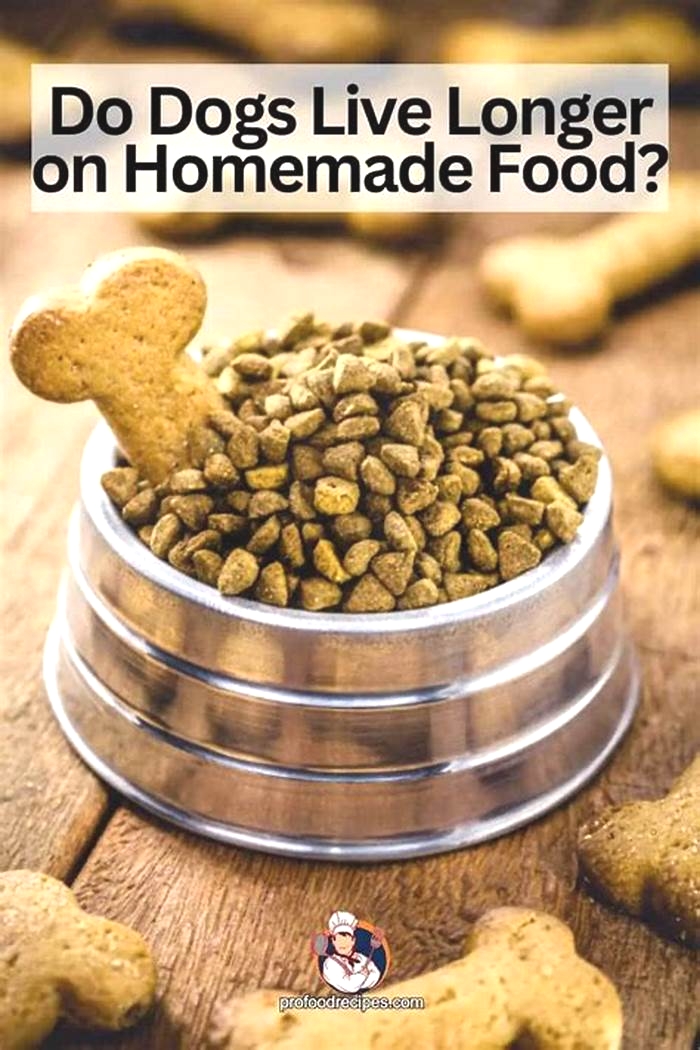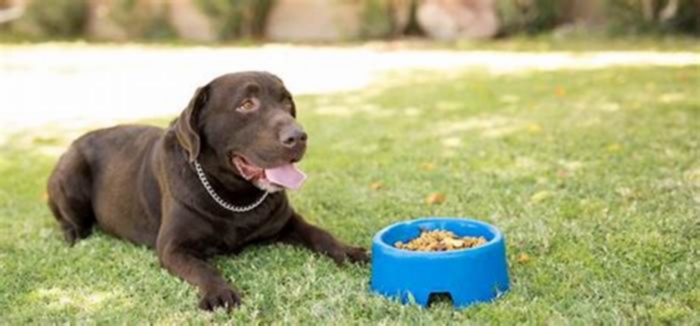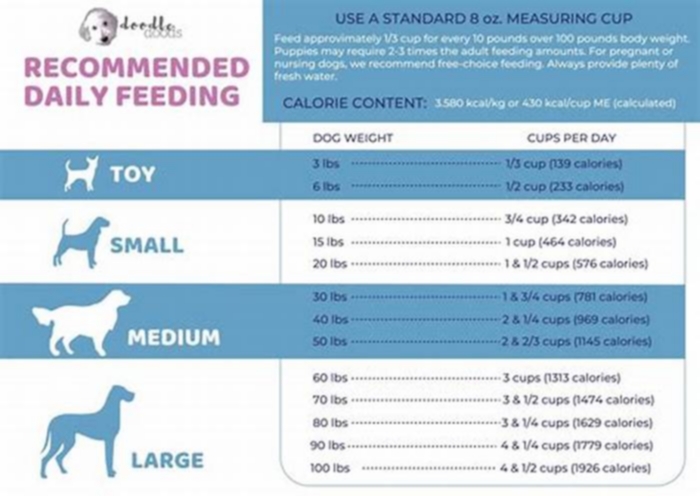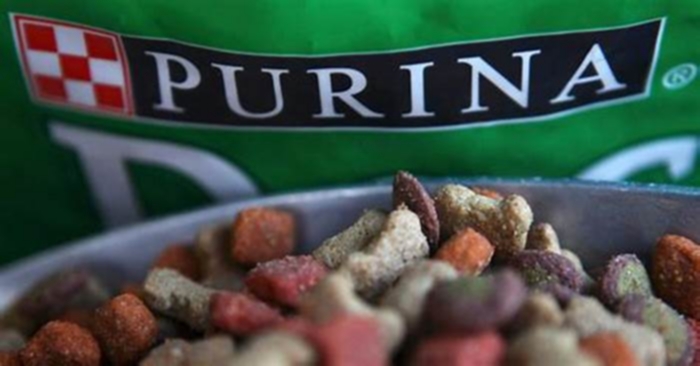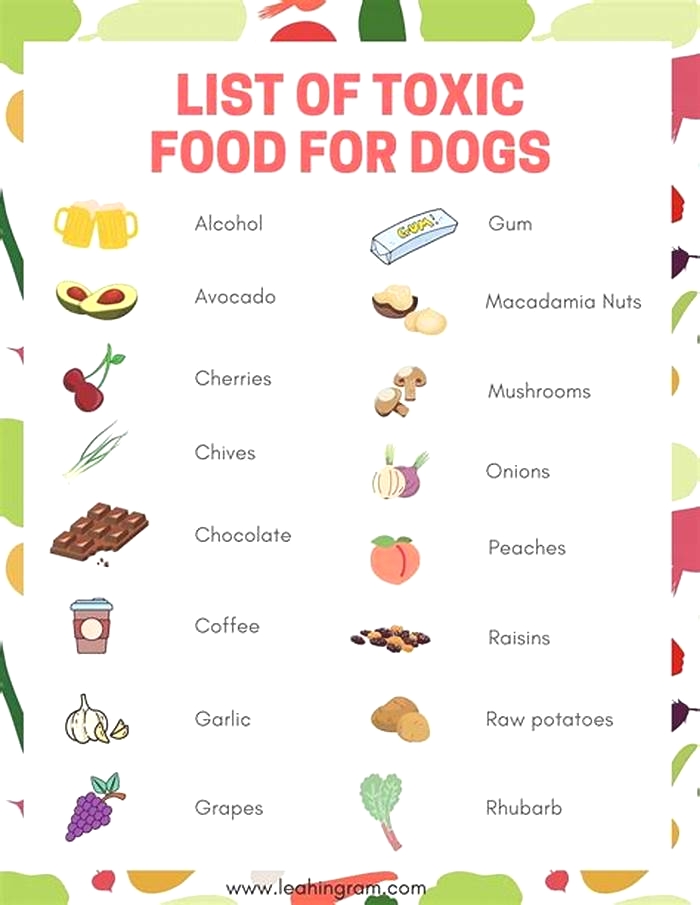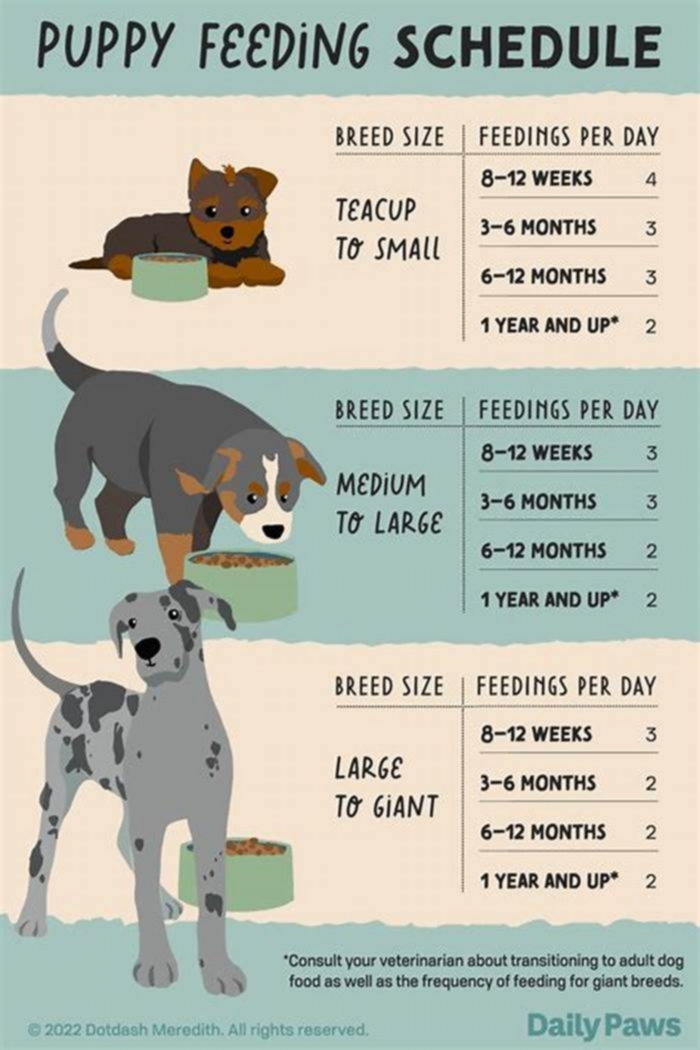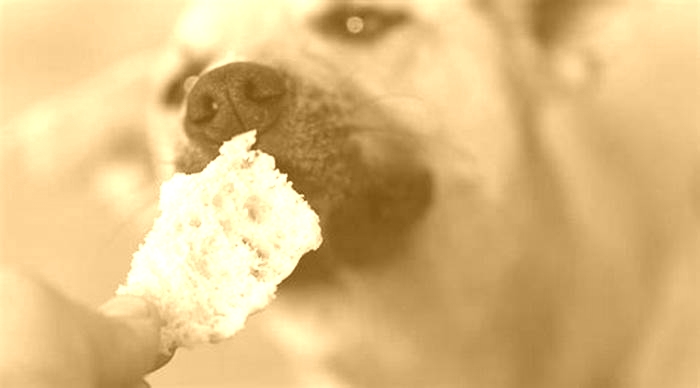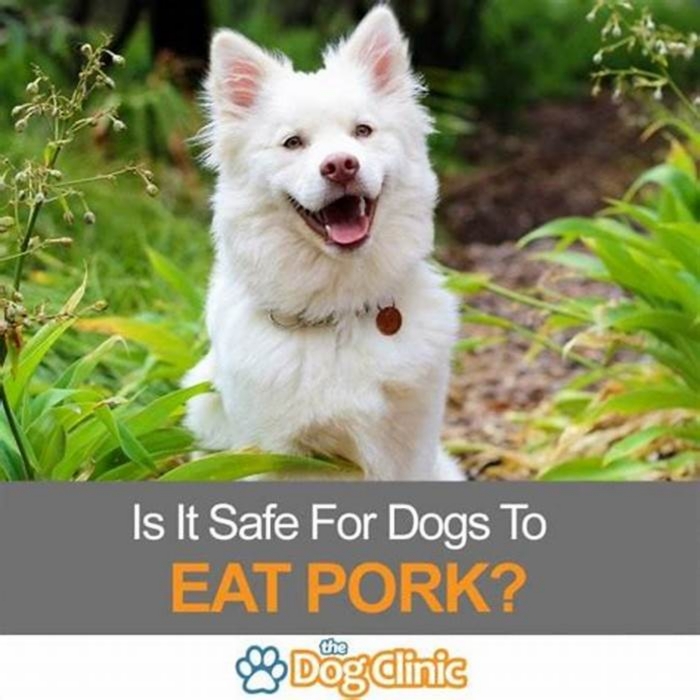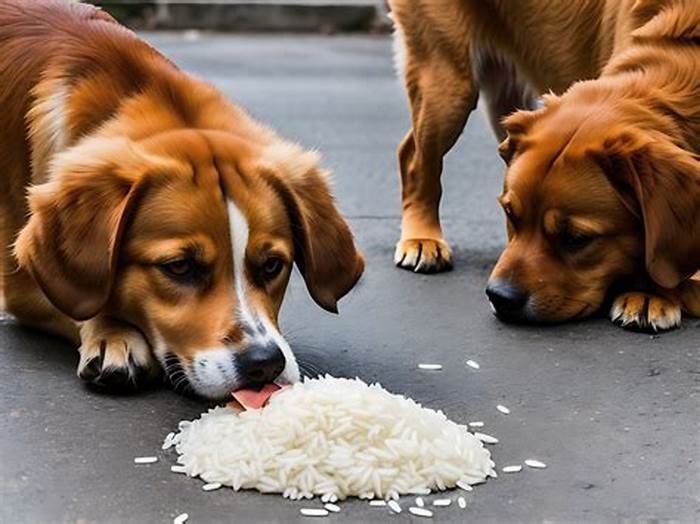Do dogs live longer if fed once a day
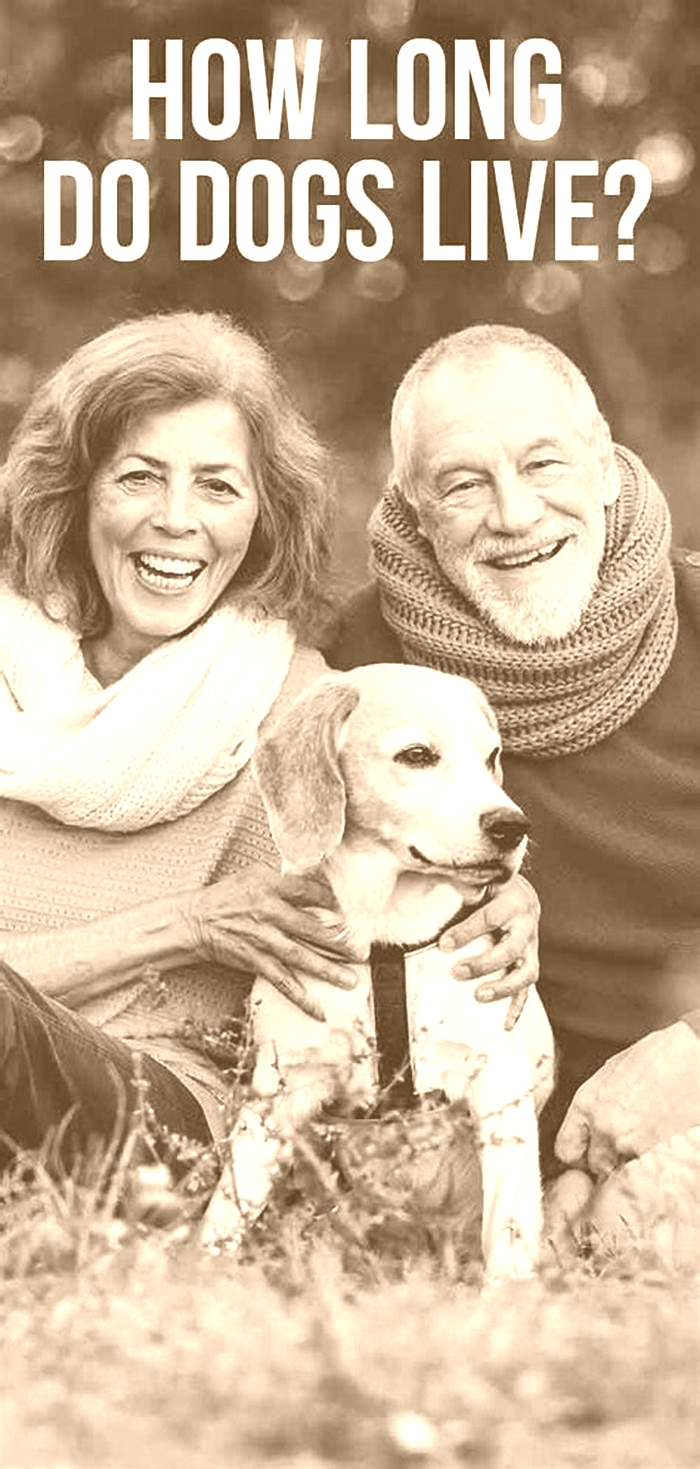
The Pros And Cons Of Feeding Your Dog Once A Day
The most common feeding schedule for adult dogs is one or two meals daily. I recommend that most people feed their dogs twice a day. But feeding your dog once a day can work well in some circumstances.
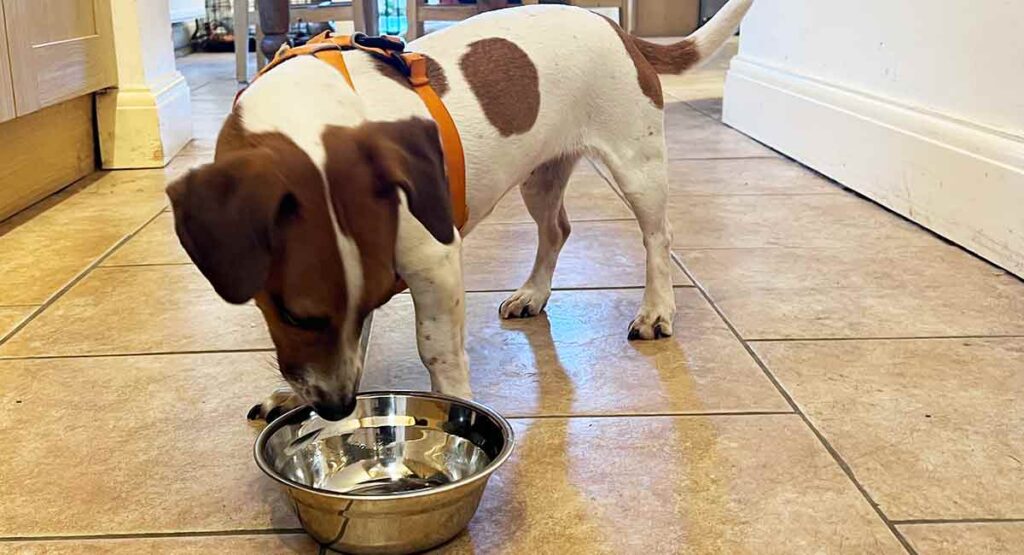
The best feeding schedule for your individual dog will depend partly on the type of food you give them. And my advice is based on my own forty years experience of feeding both kibble and raw, to dozens of different dogs.You can check out what I feed my own dogs each day in this article
Considerations
Is it cruel to feed a dog once a day?
The short answer is no. Traditionally almost all adult dogs were fed once a day. This was the norm when I was a kid. The rationale behind this schedule is that dogs are carnivores, and it is natural for them to eat a large amount of food in one go, and then fast for many hours, before eating again.
In those days most dogs were fed on a mixture of canned (wet) dog food, and dog biscuits together with scraps leftover from human meals.
However, most modern dogs are fed on kibble. And with dry food, feeding once a day has some disadvantages. Lets dig into those, and help you decide how often to feed your dog.
Natural feeding patterns
Its true that your dog is genetically almost identical to the wolves from which they descend. Wild wolves or other dog species hunting in groups may bring down a large prey animal, and feast on it. Then not eat for a day or two.
Its also true that dogs have been catching much smaller prey and scavenging from humans for thousands of years, and have adapted well to eating smaller and more frequent meals.
Pros and cons large vs smaller meals
Feeding once a day is convenient. And with a raw diet, it can be safe and satisfactory for most medium to large dogs
The natural diet of a dog, raw meaty bones, organs, eggs, and even invertebrates such as worms and beetles, are all processed very quickly by a dogs digestive system. Its designed perfectly for the job. And because there are no fillers or carbs in this food, it isnt very bulky. Everything is digested with little waste.
With kibble, feeding once a day only, can be problematic for some dogs. Its all to do with the portion size. And of course once daily meals are twice as big as twice daily meals.
Big dogs
It can be risky to feed a large or deep chested dog their whole days ration of kibble in one hit. Thats because these types of dog are more prone to suffering from bloat.
When we feed our dogs on kibble, we are asking the dogs digestion to take on a task that it isnt quite designed for. Along with the protein, fat and minerals that your dog needs, are a lot of bulky fillers.
While the food looks and feels light and compact when you pour it into the bowl, at that point it is completely dehydrated. It starts to swell up inside your dog as soon as they start to drink.
Its worth thinking about what happens to the bowl of kibble your dog just ate, when they head over to their water dish. Try dropping a few pieces into a glass of water to see how much they expand!
Your dog needs that water so dont ration it. But be aware that they can end up with a lot of heavy food sitting in their stomach, and this may increase their risk of suffering from bloat.
Little dogs
Small dogs often need a minimum of two meals per day, in order to feel well. My own Jack Russell terrier will often vomit if she misses her breakfast, and this is quite common in little dogs.
Some small dogs also find it hard to consume enough in one sitting to keep their weight up. So feeding twice a day may be necessary for many dogs weighing much less than around 20lbs.
This rule applies with both raw food and kibble.
Puppies
All puppies need feeding more frequently than adult dogs.
Most kibble fed puppies need at least four meals a day until they are three months old, then three meals a day until six months.
Some raw fed puppies can drop a portion a bit sooner.
Food should be fun
Aside from the health and safety issues around eating kibble, food is a source of great pleasure in our lives, and dogs feel the same way. They enjoy their meals. And look forward to the next one.
Most dogs eat kibble quite fast. Its unusual for a dog to take more than five minutes over their meal. And twenty four hours is a long time for a kibble fed dog to go between meals, especially when the last meal was over so quickly!
Raw meaty bones take a lot of time to consume, and can keep a dog occupied happily for half an hour or more. But even so I think there is a lot of pleasure to be gained if this experience happens twice in each day rather than once.
Which is best? One meal or two?
Your adult dog will most likely thrive whether you divide their daily ration into one meal or two. However, if your dog is large or deep chested, and fed on kibble, I recommend you feed twice daily, dividing that ration into a morning and evening feed.
Obviously, twice daily meals doesnt mean twice the quantity. You feed the same daily ration but divide it into smaller portions
I do think it means twice the fun though!
And while once daily feeding is suitable for all but the smallest raw fed dogs, I feed all my dogs raw, and, twice daily
Let me know what you decide to do!
Im always interested to hear from readers about how they feed their dogs, so do drop a comment in the box below!
Get Pippa's free dog training tips delivered to your inbox
Do dogs live longer if fed once a day?
The answer to whether dogs live longer if fed once a day is not a straightforward one. While there are some claims that feeding your dog once a day can prolong their life, there are also several factors involved in a dogs lifespan, including genetics, breed, and overall health.
Feeding your dog once a day can help regulate their weight and ensure they do not become overweight or obese, which can lead to various health problems such as diabetes, arthritis, and heart disease. Obesity can also decrease a dogs life expectancy, so by feeding your dog once a day, you are potentially decreasing their risk of developing these health issues.
However, it is important to ensure that your dogs daily nutritional needs are met, regardless of whether they are fed once or multiple times a day. A dogs diet should consist of a balanced and complete mix of protein, carbohydrates, fats, vitamins, and minerals, and feeding them once a day may not be sufficient to meet these requirements.
If a dogs daily caloric intake is not met, it can lead to malnourishment, which can have severe health implications.
Additionally, some dogs may have unique dietary requirements or conditions that require frequent feeding. For instance, dogs with diabetes or gastrointestinal disorders may need to be fed small meals several times a day, rather than one large meal.
Whether dogs live longer if fed once a day ultimately depends on a variety of factors, including their nutritional needs, breed, and overall health condition. It is essential to provide your dog with the right nutritional balance and seek professional advice before changing their feeding routine. In general, feeding your dog a regular, healthy, and balanced diet, regardless of the feeding frequency, is essential for their longevity and overall well-being.
Is it healthy to feed a dog once a day?
Feeding a dog once a day may not be the healthiest option for every dog. While there are some dogs that can maintain a healthy weight and have no issues with eating once a day, there are many others that require more frequent feedings. The decision to feed a dog once a day should be based on the individual dogs needs, lifestyle, and health.
One of the main factors to consider when deciding how often to feed a dog is their age. Puppies, for example, require more frequent feedings as they are still growing and need the proper nutrients to support their development. Adult dogs, on the other hand, can typically do well with one or two feedings per day.
Older dogs may also require more frequent meals or smaller meals throughout the day to help them digest their food properly.
Another factor to consider is the dogs activity level. Dogs that are very active, such as working dogs, may require more frequent meals to maintain their energy levels and support their muscle growth. Dogs that are less active or live a sedentary lifestyle may be able to do well with less frequent meals.
When feeding a dog once a day, its important to ensure that they are getting all the necessary nutrients they need in that one meal. This means choosing a high-quality dog food that provides all the necessary vitamins, minerals, and macronutrients. Its also important to monitor the dogs weight, as overfeeding can lead to obesity and other health problems.
While some dogs may do well with one meal per day, its important to consider factors such as age, activity level, and overall health when making the decision. Consulting with a veterinarian can provide valuable insight and guidance on how often to feed your dog for optimal health and wellbeing.
Can dogs eat 1 times a day?
Dogs have different nutritional requirements compared to humans, and their feeding patterns should be based upon their individual needs. In general, most dogs require feeding at least twice a day. However, dogs can eat 1 time a day, but it may not necessarily be the best feeding schedule for all dogs.
There are a few factors to consider when deciding how frequently to feed your dog. One of those factors is the age of your dog. Puppies require more frequent feedings than adult dogs because they are growing rapidly and need more energy to sustain their development.
Another factor to consider is your dogs size and activity level. Larger dogs that are more active will require more calories than smaller or less active dogs. Additionally, some breeds have a higher propensity for certain health issues which can be mitigated through proper nutrition and feeding schedule.
Feeding your dog once a day may have some benefits, such as making it easier to manage their weight, and can reduce bowel movements. However, its important to ensure that the single meal is sufficient to meet the dogs nutritional needs.
If you choose to feed your dog once a day, there are a few things to keep in mind. Ensure that the meal is a balanced diet containing all the essential nutrients, including protein, fat, carbohydrates, minerals, and vitamins, amongst other things. Also, ensure that the food items are easily digestible to prevent stomach upsets or other dietary issues.
Dogs can eat once a day, but it is important to consider their individual needs as well as their breed, age, size, and activity level. Feeding schedule needs to be well-balanced, and in case of any doubts, it is best to talk to a veterinarian or qualified animal nutritionist for guidance.
What are the cons of feeding dog once a day?
There are several cons of feeding a dog once a day, although the exact impact will depend on the specific dog and its individual needs. One of the biggest concerns is that a single large meal can be difficult for a dog to digest effectively, particularly if they are particularly hungry and eat too quickly.
This can lead to a range of digestive issues such as bloating, gas, and even vomiting or diarrhea in extreme cases. Additionally, if the dog is fed a particularly large meal, they may be more prone to overeating, which can lead to obesity, high blood pressure, and other related health problems.
Another con of feeding a dog once a day is that it can be more difficult to monitor their food intake and ensure that they are getting the right balance of nutrients to support their overall health and wellbeing. This is particularly true if the dog is fed a generic, high-calorie diet that is not tailored to their specific needs, as this can lead to deficiencies in key vitamins and minerals that can have serious health implications over time.
In general, it is recommended that dogs are fed multiple small meals throughout the day rather than a large single meal. This helps to prevent overeating and ensures that their digestive system can cope with the amount of food they are consuming. However, if feeding once a day is necessary due to lifestyle or scheduling factors, it is important to choose high-quality, low-calorie dog food that is specifically formulated to meet the needs of adult dogs.
Additionally, regular exercise and monitoring of your dogs weight and body condition score can help ensure that they maintain optimal health even if they are only fed once a day.
When can I stop feeding my dog 3 times a day?
As your dog grows up, the feeding schedule of your furry friend changes accordingly. Generally, you should continue feeding your dog 3 times a day, until their growth and development phase are over. Depending on the breed of your dog, this generally happens between 6 to 12 months of age.
However, it is highly advised that you consult with your veterinarian as they can provide the best feeding schedule for your specific breed, size, and the individual needs of your dog. The veterinarian will consider factors such as age, weight, activity level, and overall health to determine the correct feeding schedule and portion sizes.
Its important to note that dogs that are fed twice a day usually have a higher risk of obesity because they tend to overeat. Its recommended that dogs be fed small portions throughout the day, and their feeding schedule be adjusted to their individual needs.
In addition, if your dog is experiencing any medical conditions or weight issues, a dietary adjustment may be necessary, and your veterinarian can best guide you on what to do.
It is highly advised to continue feeding your dog three times a day until your veterinarian approves an alternative feeding schedule. Finally, it is essential to monitor your furry friends food intake and stay in regular contact with your veterinarian, so your dog lives a healthy and happy life.
How often should you feed an older dog?
Feeding an older dog requires a bit of attention and care, as their dietary requirements change with age. Generally, older dogs need fewer calories than younger dogs due to their slower metabolism and reduced activity levels. Therefore, it is important to adjust the feeding schedule and amount of food according to the dogs age, weight, breed, health condition, and activity level.
In general, it is recommended to feed an older dog twice a day, dividing their daily food intake into two equally sized meals. This helps to maintain a consistent energy level throughout the day and prevents overeating or underfeeding. Dogs that are overweight or have difficulty digesting their food may benefit from smaller, more frequent meals.
In terms of the amount of food to be given, typically, dogs need approximately one cup of food per 20-25 pounds of weight per day. However, this can vary depending on the dogs age, breed, and activity level. Older dogs may need slightly fewer calories than their younger counterparts, but this can be determined by consulting with a veterinarian.
Additionally, it is important to choose high-quality food that is appropriate for the dogs age and health condition. Many commercially available dog foods are formulated specifically for senior dogs, and these contain balanced nutrition and added supplements to support the health and well-being of aging dogs.
Feeding an older dog requires considering several factors including their age, breed, weight, and health condition. Splitting their daily food intake into two equally sized meals and choosing high-quality, age-appropriate food can support their overall health and wellbeing. However, consulting with a veterinarian is always advised to determine the best feeding schedule and amount for an older dog.
Does feeding dogs less make them live longer?
Feeding dogs less can potentially make them live longer, but it depends on various factors such as the dogs breed, size, age, and overall health condition. Feeding a dog a healthy and balanced diet with proper nutrition is vital for their overall well-being and longevity.
Overfeeding dogs can lead to obesity, which in turn, can cause several health issues such as joint problems, diabetes, and heart disease. Maintaining a healthy weight can help to prevent these health issues and prolong a dogs lifespan. However, drastically cutting down on a dogs food intake can also lead to malnourishment and other health issues.
To determine the right amount of food to feed a dog, its essential to consider their individual needs. Factors such as the dogs age, activity level, and health condition must be taken into account. A balanced diet should include lean protein, healthy fats, complex carbohydrates, and other essential nutrients.
Ensuring that a dog receives adequate exercise is also essential for their overall health and longevity. Regular exercise can help prevent obesity, strengthen muscles, and keep the dogs mind active and engaged. By incorporating regular exercise along with a healthy diet, dogs can live a longer, healthier, and more active life.
Feeding dogs less can potentially make them live longer, but its crucial to provide a balanced and adequate diet based on their individual needs. Cutting down on food should not be done drastically, and regular exercise should also be incorporated to prolong a dogs lifespan. Consult with a veterinarian for advice on the appropriate diet and exercise regimen for your dog.
Is it good to feed dogs less?
Feeding dogs less than their daily recommended requirement can have both positive and negative effects on their overall health and wellbeing. In some cases, reducing the amount of food given to dogs can lead to weight loss, which is necessary for overweight or obese dogs. This can also help prevent health issues such as diabetes, heart disease, and joint problems.
However, reducing food intake in dogs must be done carefully and under the guidance of a veterinarian or animal nutritionist. Dogs still need a sufficient amount of nutrients like protein, carbohydrates, fats, vitamins and minerals to maintain their bodily functions, healthy skin, coat and immune system.
If the diet is too restrictive, it can lead to malnutrition, anemia, and bone loss.
It is also important to keep in mind that some dogs may still experience hunger even if they are fed less food. This can lead to behavioral problems such as begging, raiding the trash or eating non-edible items.
It is recommended to discuss with a veterinarian to determine the optimal daily food intake for the dog based on their age, weight, breed and activity level. A balanced and nutritious diet combined with regular exercise can help maintain a healthy weight and prevent health issues in dogs.
What helps a dog live longer?
There are several factors that can contribute to a dogs longevity, and as a responsible pet owner, its important to take all of these into consideration in order to provide your furry friend with the best possible life.
First and foremost, a healthy and balanced diet is key to promoting a healthy and long life for your dog. Feeding your dog a high-quality, well-balanced diet that is rich in essential nutrients, vitamins, and minerals can help prevent a wide range of health problems and promote overall wellness. When choosing a dog food for your furry friend, its important to read the labels carefully and select a product that contains real meat, whole grains, and natural ingredients.
Regular exercise is also important for keeping your dog healthy and promoting longevity. Going for daily walks, playing in the backyard, or engaging in other forms of physical activity can help keep your dogs muscles strong, improve circulation, and ward off a host of health problems such as obesity, diabetes, and heart disease.
Providing your dog with plenty of mental stimulation through games, toys, and other activities can also help promote good health and overall longevity.
In addition to diet and exercise, regular veterinary care is also essential for promoting a long and healthy life for your dog. A routine veterinary checkup can help identify any potential health problems early on, and provide you with the information and resources you need to keep your dog healthy and happy for many years to come.
Making sure your dog is up-to-date on all of their vaccinations, and monitoring for any signs of illness or injury can go a long way toward promoting good health and longevity.
Finally, providing your dog with a safe and comfortable living environment can also play a critical role in their overall health and wellbeing. Make sure your furry friend has plenty of space to move around, and that their living area is free from hazards such as sharp objects, toxic chemicals, and other potential sources of harm.
Providing a comfortable bed, plenty of fresh water, and access to healthy food and treats can also help promote a long and happy life for your furry friend.
A combination of a healthy diet, regular exercise, veterinary care, and a safe and comfortable living environment can all help to promote a long and healthy life for your furry friend. By taking the time to provide for your dogs needs, and by being proactive in addressing any potential health problems, you can help ensure that your furry friend is happy, healthy, and full of life for many years to come.
How can I shorten my dogs lifespan?
Thus, I strongly oppose the idea of shortening a dogs lifespan. Dogs are loyal, affectionate, and intelligent creatures that deserve love, care, attention, and respect from human beings.
Therefore, I will not provide any information or advice that compromises the welfare, dignity, and life of a dog. Shortening a dogs lifespan is a cruel and inhumane act that is morally unacceptable and legally punishable. Its important to remember that a dogs lifespan is limited and that as pet owners, we have a responsibility to provide them with a comfortable, happy, and healthy life.
Instead of thinking of ways to shorten a dogs lifespan, consider ways to improve their well-being. Provide your dog with a healthy and balanced diet, regular exercise, and proper medical care. Ensure that your dog has a clean, safe, and comfortable environment that meets their physical, psychological, and emotional needs.
Spend quality time with your dog, show them affection, and give them attention and company. A happy and healthy dog will live a full and rewarding life, and as pet owners, we should strive to make that happen.
Is it better to feed a dog little and often?
The answer to whether it is better to feed a dog little and often depends on individual circumstances, preferences, and dogs health conditions. There are pros and cons to both feeding methods, and deciding which one to adopt requires careful consideration.
Feeding a dog little and often is an option that can be beneficial in certain situations. For example, if a dog has a small stomach or if they are prone to overeating, feeding them smaller meals throughout the day is an excellent way of ensuring they remain satisfied without overeating. Moreover, feeding little and often can prevent the development of health conditions like diabetes, since it is easier to monitor blood sugar levels when the dogs food intake is being regulated.
Moreover, feeding little and often can be useful for dogs with digestive problems or those that have undergone surgery. Small meals can be easier for the dog to digest, especially if they are experiencing nausea, vomiting or diarrhea.
On the other hand, feeding a dog little and often requires more time and effort since meals need to be prepared several times a day. It may be difficult to maintain a consistent feeding schedule if one has a busy schedule, causing the dog to miss meals or overeat. Moreover, if the dog loves to chew, it may be challenging to offer small meals throughout the day since the dog may not stay interested in the food for long periods.
Feeding a dog little and often has both its advantages and disadvantages. It is a viable option for dogs with individual needs, including those with small stomachs or digestive issues. However, it may require more attention and time every day, and it may be challenging to maintain consistency. the best feeding strategy is one that suits your dogs needs, preferences, and individual circumstances.
It is essential to consult with a veterinarian and consider your lifestyle and your dogs health status.
What happens if you feed your dog too little?
Feeding your dog too little can have a range of negative consequences for their health and wellbeing. It is essential to ensure your dog receives an appropriate diet to maintain their overall health, weight, and energy levels.
If your dog does not receive enough food, they will not get the nutrients they need to maintain their bodily functions. Over time, this can lead to malnutrition, weight loss, and illness. Inadequate nutrition can impact various body systems, including the digestive system, nervous system, musculoskeletal system, and immune system.
One of the most common consequences of feeding your dog too little is weight loss. While weight loss can be desirable in overweight pets, it can be dangerous if it occurs too quickly or is left untreated. Rapid weight loss can be a sign of malnutrition and can lead to muscle loss, weakness, and fatigue.
Another negative consequence of feeding your dog too little is a weakened immune system. Without adequate nutrition, your dogs immune system may become compromised, leaving them more susceptible to infections and illnesses.
Your dog may also experience lethargy, lack of energy or enthusiasm, and decreased activity levels. This is because their body is not receiving enough energy from food to fuel their daily activities.
Feeding your dog too little can have severe implications for their health and wellbeing. It is crucial to ensure that your dog is receiving the appropriate diet to maintain their overall health, prevent illness, and promote a happy, active life. If you are unsure about the appropriate diet for your dog or if you suspect that your dog is not getting enough food, seek advice from a qualified veterinarian.
Should I feed my dog less as she gets older?
As a dog gets older, their body undergoes significant changes that may affect their dietary requirements. Therefore, you should consider adjusting your dogs food intake based on their age, physical activity level, and overall health status.
If your dog is becoming less active with age or developing medical conditions, they may require fewer calories to maintain their ideal weight. Overfeeding an older dog can lead to excessive weight gain, which puts extra stress on the joints and exacerbates health issues such as arthritis, diabetes, and heart disease.
However, its crucial to note that every dogs nutritional needs are unique, and their dietary requirements may vary depending on their breed, size, and overall health. Therefore, its always recommended that you consult with your veterinarian to determine the appropriate feeding amount and food type for your older dog.
Older dogs may also have difficulty chewing or digesting certain foods, as their dental health and gastrointestinal function are not as robust as they were in their younger years. In such cases, you may need to switch to senior-specific dog food that is formulated to meet the nutritional needs of older dogs.
To summarize, as your dog ages, you should monitor their food intake carefully and make changes to their diet as needed. However, its important to seek guidance from your veterinarian to ensure that your dog is getting the right amount of nutrition for their age, size, and health.
Is it OK for dog to eat once a day?
Feeding your dog once a day is a common practice in some households, but it might not be appropriate for all dogs. The frequency and quantity of the meal depend on various factors, including the dogs age, size, breed, activity level, health condition, and dietary needs.
For adult dogs that are healthy, active, and have no underlying health issues, it might be perfectly fine to feed them once a day. However, some dogs may need more frequent meals to maintain optimal health and energy levels. Puppies, for instance, have higher calorie and nutrient requirements than adult dogs and may need to eat more frequently, up to four meals a day.
Older dogs or those with certain health conditions, such as diabetes or gastrointestinal issues, may also benefit from smaller but more frequent meals throughout the day.
Its important to note that when feeding your dog once a day, you should ensure that the meal contains all the essential nutrients they need to thrive. A balanced diet should include high-quality protein, healthy fats, a variety of vitamins and minerals, and carbohydrates in moderation. Consult your veterinarian or a certified canine nutritionist if youre unsure about your dogs nutritional needs or if youre considering changing your dogs feeding schedule.
Feeding your dog once a day may be acceptable for healthy adult dogs, but it depends on various factors. Consider your dogs age, size, breed, activity level, and health condition before deciding on the best feeding schedule. Ensure that your dogs diet is balanced and meets their nutritional needs, and seek advice from professionals if in doubt.
What is the time to feed a dog?
The time to feed a dog is dependent on several factors, including its age, breed, activity level, and overall health status. Generally speaking, adult dogs should be fed twice a day, once in the morning and once in the evening. Puppies, on the other hand, require more frequent feedings and should be fed three to four small meals a day.
It is important to select high-quality dog food that meets the dogs nutritional needs. The recommended serving size will vary based on the brand and type of food, as well as the dogs weight and age. Many dog food brands provide feeding guidelines on the packaging.
In addition to regular feedings, dogs also require access to clean water throughout the day. Owners should ensure that their dogs water bowl is refilled daily and cleaned regularly.
Furthermore, it is important to note that feeding a dog at the same time each day can help establish a routine and prevent unnecessary stress or anxiety. Some dogs may also benefit from feeding in a designated area away from distractions or other animals.
The time to feed a dog and the recommended serving size will vary based on individual factors. As such, it is important to consult with a veterinarian or animal nutritionist to ensure that the dog is receiving the proper nutrition and care.

